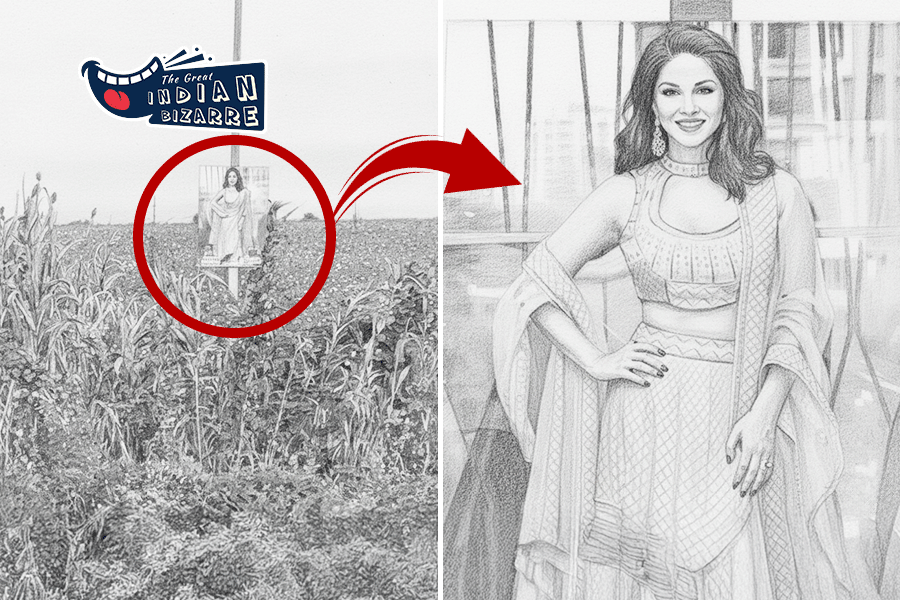 Sunday, 07 December 2025
Sunday, 07 December 2025
 Sunday, 07 December 2025
Sunday, 07 December 2025
Nine pieces of jewellery from Napoleon’s collection were stolen from the Louvre in Paris on Sunday morning in a stunning breach of security and a movie-style heist.
The thieves apparently used a basket lift to reach the fabled museum and made off with the gems even as tourists thronged the Apollo Gallery where the French crown jewels are displayed.
For the Louvre, this isn’t new territory.
The museum has seen thefts and attempted robberies for decades, including the 1911 disappearance of its most famous exhibit, Leonardo da Vinci’s Mona Lisa, which vanished from its frame before being recovered two years later.
Sunday’s heist has once again raised questions about museum security worldwide, and it joins a long list of daring art crimes that have shaken cultural institutions throughout history.
Dresden’s Green Vault, 2019
At Dresden’s Green Vault, one of Europe’s oldest museums, thieves broke in before dawn on November 25, 2019 and stole 21 pieces of 18th-century jewellery worth over €98 million. The loot included diamond-encrusted swords, brooches and buttons.
Officials called the stolen sets “priceless.” Much of the jewellery was later recovered, and five men were convicted.
'Spider-Man' Heist, 2010
Vjeran Tomic, nicknamed “Spider-Man,” scaled the walls of Paris’s Musée d’Art Moderne and removed five paintings by Matisse, Picasso, Modigliani and others. Security guards discovered the break-in only hours later.
The paintings, worth over €100 million, remain missing.
Manchester’s restroom recovery, 2003
Three paintings by Van Gogh, Picasso and Gauguin were stolen from the Whitworth Art Gallery in Manchester on April 23, 2003. Two days later, police found them stuffed inside a public restroom, along with a note mocking the museum’s “poor security.”
Cezanne skylight job, Oxford, 2000
A lone thief lowered himself through a skylight into the Ashmolean Museum in Oxford on New Year’s Eve. Using a smoke canister to blind cameras, he snatched Cezanne’s View of Auvers-sur-Oise and escaped within minutes. The painting remains missing.
The Scream, twice taken
Edvard Munch’s The Scream was first stolen from Norway’s National Gallery in 1994, with the thieves leaving a note demanding $1 million. It was recovered three months later. A second version was stolen in 2004 and found in 2006.
Gardner Museum robbery, 1990
The night of March 18, 1990, remains the darkest in art history.
Two men dressed as Boston police officers tricked their way into the Isabella Stewart Gardner Museum, overpowered two guards, and spent more than an hour looting 13 artworks worth over $500 million.
Among the stolen pieces were masterpieces by Vermeer, Rembrandt, Degas and Manet. Vermeer’s The Concert alone was valued at half a billion dollars. None of the works have ever been recovered. Empty frames still hang in the museum as grim reminders.
Van Gogh Museum robberies, 1991 and 2002
Amsterdam’s Van Gogh Museum has been hit twice. In 1991, thieves made off with 20 paintings worth over €400 million, including The Potato Eaters, though all were found abandoned in a nearby car.
In 2002, another crew climbed the museum walls and smashed a window to grab View of the Sea at Scheveningen and Congregation Leaving the Reformed Church in Nuenen. Fourteen years later, Italian police found both paintings in a Naples mafia hideout.
Poppy Flowers, stolen twice
Van Gogh’s Poppy Flowers was stolen from Cairo’s Mohamed Khalil Museum in 1977, recovered after a decade, and stolen again in 2010. It hasn’t been seen since. Egyptian authorities have offered a $175,000 reward for its return.
Montreal Museum of Fine Arts, 1972
Thieves broke in through a skylight at the Montreal Museum of Fine Arts and escaped with 18 paintings, including a Rembrandt. They used a rope to lower themselves into the gallery and drove off in a stolen truck. Only one painting was ever recovered.
'Takeaway Rembrandt'
Rembrandt’s Jacob de Gheyn III has the dubious honour of being the most stolen painting in history. It disappeared from London’s Dulwich Picture Gallery four times, in 1966, 1973, 1981, and 1983, each time through different means.
The painting was found after every theft and continues to hang in the same gallery.
Mona Lisa theft, 1911
Leonardo da Vinci’s Mona Lisa, now the face of the Louvre, was once an unknown painting to most. In 1911, Vincenzo Peruggia, a former employee, hid inside the museum overnight and simply walked out with it under his coat.
The theft triggered global outrage. Newspapers from Paris to New York splashed the missing painting across their front pages. It was found two years later in Florence, when Peruggia tried to sell it.
The incident turned the Mona Lisa into the world’s most famous artwork.







